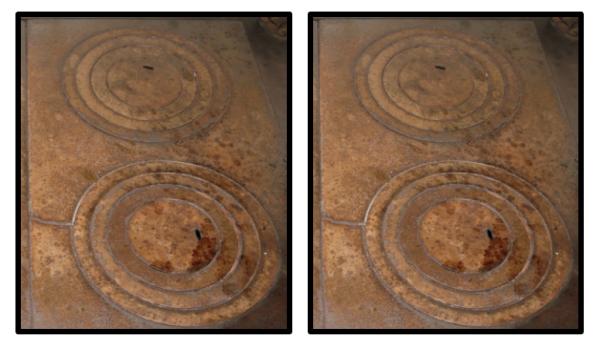Mixtures of vinegar and baking soda, also known as sodium bicarbonate, are often promoted as a "green," chemical-free cleaning solution. While this combination may be environmentally friendly, it is not effective as many DIY sources claim. In fact, using these two agents together is not only worthless but, in some cases, unsafe.
Here are a few (of many) examples:
- "I cleaned my house using only baking soda and vinegar for a week – here is what I learned" (Homes and Gardens)
- "17 Tips for Cleaning With Vinegar and Baking Soda" (Angie's List)
- "Cleaning with Baking Soda and Vinegar - DIY All the Way!" (Biome Stores)
- "Homemade Household Cleaners" (Midlothian Texas)
The last one should raise a few eyebrows.
Combine 1 teaspoon baking soda, 2 teaspoons vinegar, 1/4 teaspoon dishwashing liquid, 1 teaspoon lemon juice, and 2 cups hot water in a spray bottle and shake well. Add essential oil for fragrance if desired, and add 1 teaspoon of borax for extra cleaning power.
A couple of problems here:
- Potential safety issues
Although the small amounts recommended in the recipe are highly unlikely to cause trouble suppose someone, such as Joe, depicted below, wants a super-powered (1) cleaner and uses ten times the amount in the recipe above.

Joe (or what's left of him) learns the hard way that generating a large amount of gas in a small closed container is not a good idea. Credit: SpookieWaffles (Deviant Art).
If Headless Joe used these ingredients 1.9 liters of carbon dioxide would be generated, enough to fill a 14-inch balloon (2). Depending on the size, material, and seal of the container that Ex-Joe used this could be merely annoying or dangerous. Let's assume a container holds 200 mL (about 7 ounces). The volume of CO2 generated will be about 10X that of the bottle. The pressure in a sealed container (the worst case scenario) would be 150 psi, enough to blow up containers made of plastic, glass, or even metal, depending on the particular metal and its thickness. ChatGPT4 says the following:
"If a standard, non-pressurized metal container were used, the pressure from the reaction would likely cause it to deform or burst, which could be dangerous."
2. It won't work
Of course, I've used a worst-case scenario, which is unlikely (but possible - lots of morons out there) to happen. The other problem is that, except in special cases (3), the mixture won't clean anything. Here's why.
Vinegar and bicarbonate react with each other. Really fast. Acid-base reactions are among the fastest of all chemical reactions. Here's the equation.

Baking soda reacts immediately with vinegar to form sodium acetate, water, and carbon dioxide. The red arrow indicates that a gas is formed.
Sodium acetate is one of the least toxic chemicals in the universe. It is even safer than salt in LD50 tests. It is (mostly) chemically inert, neither acid nor basic. It has no cleaning properties whatsoever and is not used for this purpose. So, while there are uses for both bicarbonate (surfaces, ovens, grout...) and also vinegar (soap scum in the shower, coffee makers, mirrors...) when you put them together all you get to clean up is Joe's head.
Bottom line
Although there are legitimate touted uses of vinegar plus sodium bicarbonate, use them alone, not mixed, as this neutralizes the cleaning power of both. Joe knows.
NOTES:
(1) According to homeopathic principles witchcraft, a more dilute solution of the two should be a stronger cleaner than a more concentrated solution. Just cut down the amounts by a factor of one million and you can effortlessly remove decades of vileness from the Cross Bronx Expressway.
(2) These numbers come from ChatGPT. I couldn't calculate them if I lived another 95 years. If it's wrong blame OpenAI
(3) One example of the utility of the combination is unclogging a drain. Add bicarbonate, then vinegar, and close the drain. The pressure and bubbles may loosed the clog.




